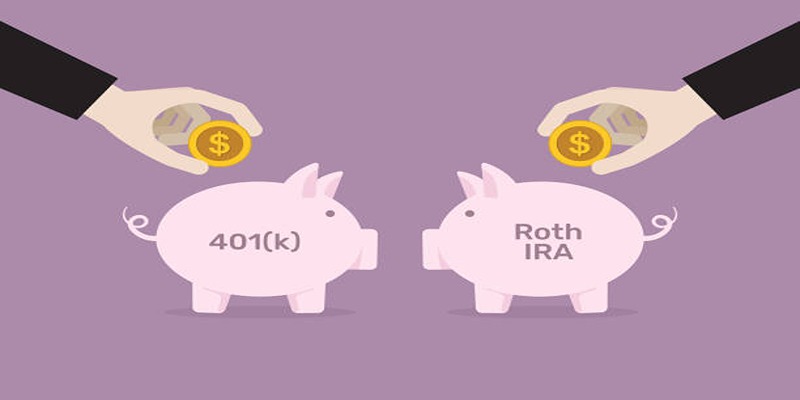Is Adding After-Tax Contributions to Your 401(k) a Smart Move?
Saving for retirement is one of the most important financial steps you can take, and a 401(k) plan is a powerful tool to help you get there. While you may already be making pre-tax or Roth 401(k) contributions, after-tax contributions are another option worth considering. But is it right for you? Understanding how after-tax contributions work and the potential benefits they offer can help you make a better decision for your financial future. Let's explore if this strategy could boost your retirement savings.
What are After-Tax Contributions?

After-tax contributions, also known as non-deductible contributions, involve investing money into a traditional 401(k) plan after paying taxes on it. These contributions are different from pre-tax and Roth contributions because they are not tax deductible and do not have any income limitations. This means that anyone can make after-tax contributions regardless of their income level.
How Do After-Tax Contributions Work?
When you contribute to your 401(k) after tax, the money is contributed to your account in the same way you make any other contribution to the account. But, when the funds have to be withdrawn during retirement, only the earnings on those withdrawals after taxation will be charged. These initial after taxes contributions shall not undergo any taxes.
In this strategy, it will be helpful for high-income earners will have exhausted the annual maximum contribution in pre-tax and Roth accounts. The after-tax contributions enables them to keep saving for retirement while possibly finding ways of lowering his/ her taxable income. Additionally, since these contributions are not tax deductible, they may also be able to reduce their current tax bill.
Benefits of After-Tax 401(k) Contributions
1. More Flexibility for High-Income Earners
After-tax contributions can be a great tool for individuals with high wages that cannot make pre-tax or Roth contributions anymore. With after-tax contributions they can go on contributing towards their retirement saving despite the chances that their income might be taxed.
Tax-Free Growth
Earnings from after-tax contributions grow tax-free, similar to traditional 401(k) and Roth contributions. This allows your investment gains to accumulate without taxation until you withdraw the funds in retirement.
3. Lower Taxes During Retirement
Since only the earnings on after-tax contributions are subject to taxes during retirement, this strategy can help lower your overall tax bill. By having a mix of pre-tax, Roth, and after-tax contributions in your retirement account, you can have more flexibility when it comes to managing your taxable income during retirement.
Drawbacks to Consider
While after-tax contributions have their benefits, there are some drawbacks to keep in mind:
1. Lower Contribution Limits
The annual contribution limit for a traditional 401(k) plan is $19,500 (as of 2020), but this limit includes all types of contributions - pre-tax, Roth, and after-tax. If you reach this limit with your pre-tax and Roth contributions, you can only make up to an additional $6,500 in after-tax contributions (or $26,000 if you're over the age of 50).
2. No Employer Match
Employer matches are typically only offered for pre-tax or Roth contributions. This means that any after-tax contributions you make will not be eligible for an employer match, which could result in missing out on potential additional savings.
3. Complex Withdrawal Rules
Withdrawals from a 401(k) plan can be complex, and this is especially true for after-tax contributions. If you have both pre-tax and after-tax funds in your account, the IRS requires that you withdraw them proportionally. This means that it can be challenging to withdraw only your after-tax contributions without also withdrawing some of your pre-tax funds.
Effective Strategies for After-Tax 401(k) Contributions
If after-tax contributions make sense for your financial situation, there are a few strategies you can use to maximize their benefits:
1. Convert to a Roth IRA
Some employers may offer the option to convert after-tax contributions into a Roth IRA while still employed. This allows you to take advantage of tax-free growth and potentially avoid complex withdrawal rules in the future.
2. Use the Mega Backdoor Roth IRA Strategy
If your employer offers an in-service distribution option, you can transfer your after-tax contributions directly into a Roth IRA. This is known as the "mega backdoor" Roth IRA strategy and can be an effective way to contribute more money towards retirement while also taking advantage of tax-free growth.
3. Rebalance Regularly
As with any investment strategy, it's essential to regularly rebalance your portfolio and adjust the allocation of your funds based on your risk tolerance and retirement goals. This applies to after-tax contributions as well.
How to Decide if It’s the Right Choice for You

Deciding whether or not to make after-tax contributions to your 401(k) plan ultimately depends on your individual financial situation and long-term goals. Some factors to consider when making this decision include your current tax bracket, potential future earnings, and retirement income needs.
It may be beneficial to consult with a financial advisor to evaluate all aspects of your finances and determine if after-tax contributions align with your overall retirement strategy. Additionally, regularly reviewing and reassessing these decisions can help ensure that you are making the most effective choices for your financial future.
Conclusion
After-tax contributions can be a valuable component of your retirement savings strategy, offering potential tax benefits and flexibility in the future. By making after-tax contributions to your 401(k) plan, you have the opportunity to diversify your retirement income sources and take advantage of tax-free growth. Regularly rebalancing your portfolio and consulting with a financial advisor can help ensure that your after-tax contributions align with your long-term goals. Ultimately, the decision to make after-tax contributions depends on your individual financial situation and retirement objectives.












